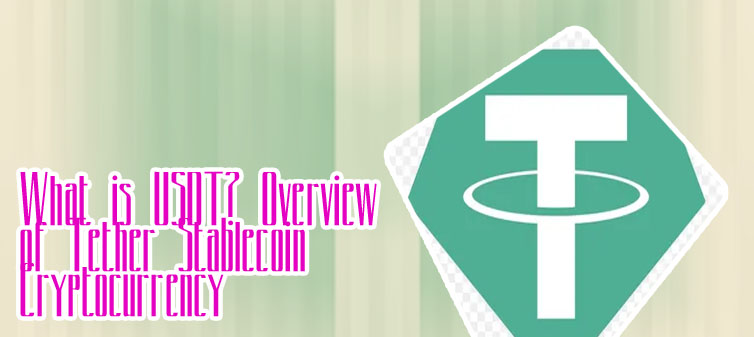
Tether crypto
Tether coin has been a topic of much discussion and controversy in the world of cryptocurrency. As a stablecoin pegged to the US dollar, Tether has faced scrutiny over its reserves and transparency. In order to gain a better understanding of Tether and its implications, it is important to read a variety of articles that cover different aspects of the topic. Below is a list of 4 articles that will help provide insight into Tether coin and its role in the cryptocurrency market.
The Truth Behind Tether's Reserves: A Deep Dive Into the Controversy

Today we have the pleasure of diving deep into the controversial topic of Tether's reserves. Joining us is a renowned expert in the field of cryptocurrency, who will shed light on this complex issue.
Expert: "The controversy surrounding Tether's reserves has been a hot topic in the cryptocurrency community for quite some time now. Many investors have expressed concerns about the transparency and legitimacy of Tether's claims regarding their reserve holdings."
Expert: "One of the key issues at play here is the lack of a clear audit trail for Tether's reserves. While Tether has claimed to have sufficient reserves to back up their stablecoin, there have been doubts raised about the accuracy of these claims."
Expert: "It is crucial for investors to have confidence in the stability and reliability of stablecoins like Tether. Without transparent and verifiable reserves, there is a risk of destabilizing the entire cryptocurrency market."
In conclusion, this article provides a comprehensive analysis of the controversy surrounding Tether's reserves. By shedding light on the complexities of this issue, it serves as an important resource for investors looking to better understand the risks and challenges associated with stablecoins in the cryptocurrency market.
Understanding the Role of Tether in Crypto Trading: Liquidity Provider or Market Manipulator?
Tether (USDT) has been a controversial topic in the world of cryptocurrency trading, with many questioning its role as a liquidity provider or market manipulator. Tether is a stablecoin that is pegged to the US dollar, with each USDT token supposedly backed by a dollar in reserve. This has raised concerns about the true value of Tether and its impact on the crypto market.
One of the main arguments in favor of Tether is its role as a liquidity provider. By providing a stablecoin that can be easily traded for other cryptocurrencies, Tether helps to increase liquidity in the market and facilitate trading. This can be particularly useful during times of high volatility when traders may want to quickly move in and out of positions.
However, there are also concerns that Tether may be used to manipulate the market. Critics argue that Tether has been used to artificially inflate the price of Bitcoin and other cryptocurrencies by creating large amounts of USDT out of thin air. This could potentially distort the market and mislead investors.
Overall, the role of Tether in crypto trading is still a topic of debate. While it does provide liquidity to the market, there are legitimate concerns about its potential for market manipulation. Investors should be aware of these risks and carefully consider the impact of T
Tether vs. Other Stablecoins: A Comparison of Features and Risks
In the world of cryptocurrency, stablecoins play a crucial role in providing stability and security for investors and traders. One of the most well-known stablecoins is Tether, which is pegged to the US dollar. However, there are other stablecoins in the market that offer different features and carry their own set of risks.
When comparing Tether to other stablecoins, it's important to consider factors such as transparency, liquidity, and regulatory compliance. Tether has faced scrutiny in the past regarding its reserves and transparency practices, which has raised concerns among investors. On the other hand, stablecoins like USDC and DAI have gained popularity for their transparency and regulatory compliance, making them a more attractive option for some investors.
In terms of liquidity, Tether has a significant advantage due to its widespread adoption and use across various cryptocurrency exchanges. This high liquidity makes it easier for investors to buy and sell Tether quickly without affecting its price stability. However, other stablecoins like USDC and DAI are also gaining traction and are becoming more widely accepted in the market.
Overall, when choosing a stablecoin to invest in, it's important to carefully consider the features and risks associated with each option. While Tether may have the advantage of high liquidity, other stablecoins like US
Regulatory Challenges Facing Tether: What the Future Holds for the Controversial Stablecoin
Tether, the controversial stablecoin, has been facing a myriad of regulatory challenges in recent times. As one of the most widely used stablecoins in the cryptocurrency market, Tether's regulatory issues have raised concerns among investors and regulators alike. The future of Tether remains uncertain as it navigates through these challenges.
One of the key regulatory challenges facing Tether is its lack of transparency. The company behind Tether has been criticized for not providing sufficient information about its reserves and operations. This lack of transparency has raised doubts about the stability of Tether and its peg to the US dollar.
Another regulatory challenge facing Tether is its legal status. Tether has been the subject of investigations by regulatory authorities in various jurisdictions, raising questions about its compliance with regulations. The company's legal battles could have a significant impact on its future viability.
In order to better understand the regulatory challenges facing Tether, it is important to consider the company's transparency practices and legal compliance. By addressing these issues, Tether can potentially regain the trust of investors and regulators, ensuring its long-term success in the cryptocurrency market.